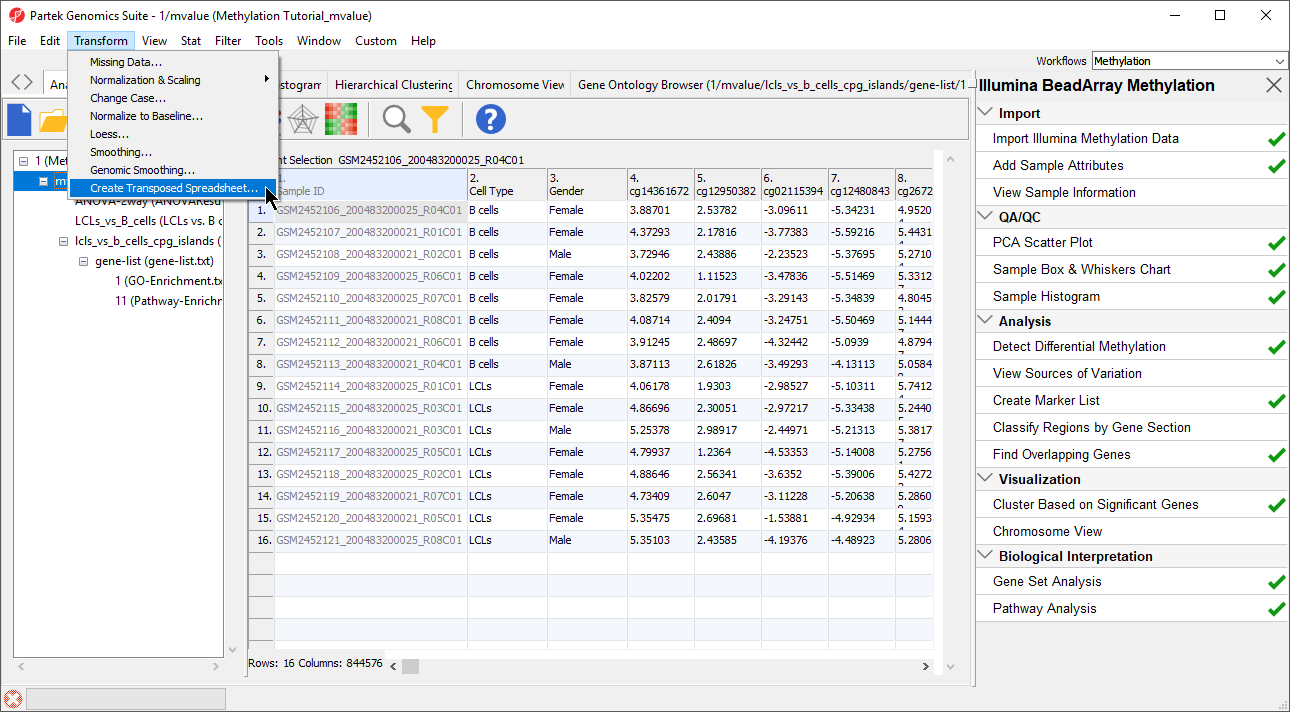
The approach described in previous sections relies on ANOVA to detect differentially methylated CpG sites and takes individual sites as a starting point for interpretation. Since ANOVA compares M values at each site independently, this strategy is robust to type I/type II probe bias.
An alternative could be to first summarize all the probes belonging to a CpG island region (i.e. island, N-shore, N-shelf, S-shore, S-shelf) and then use ANOVA to compare regions across the groups. Since the summarization will include both type I and type II probes, you may want to split the analysis in two branches and analyze type I and type II probes independently. To do this, we need to annotate each probe as type I or type II.
|
A new temporary spreadsheet will be created with a row for each probe and columns for each sample.
|
Now, we can use the interactive filter to create separate spreadsheets for type I and type II probes.
|
The temporary spreadsheet is no longer needed so we can close it.
We can use these spreadsheets to generate lists of M values at CpG island regions
|
|
The new temporary spreadsheet has one CpG island region per row (Figure 6), samples on columns, and the values in the cells represent the mean of M values of all the CpG probes in the region.
|
Note the first row, with label “– Mean”. It corresponds to all the probes that map outside of UCSC CpG islands. As it is not needed for the downstream analysis, we will remove it.
The final step is to transpose the data back to its original orientation.
The layout of the new transposed spreadsheet is as follows: one sample per row with CpG island regions on columns; cell entries correspond to mean methylation status of the region (Figure 7). The column with a blank value for the column header is the average of all probes not associated with CpG island regions. You can delete this column if you like.
|
The mvalues_typeII_probes_CpG_islands spreadsheet can be used as a starting point for ANOVA and other analyses. You can also repeat the steps above to create an equivalent spreadsheet for type I probes.
|